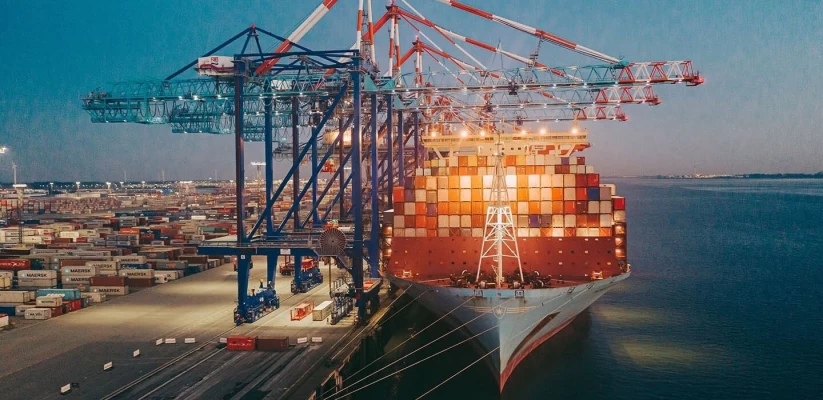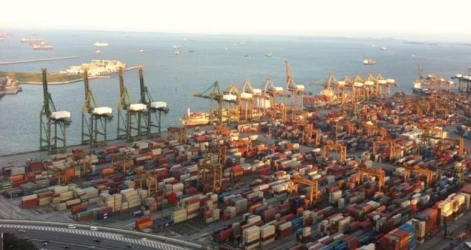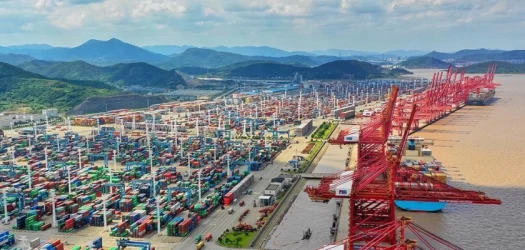Sea freight in Dhaka port
The Port of Dhaka, located on the Buriganga River, plays a vital role in Bangladesh's maritime and trade sectors. As the largest inland port in the country, it serves as a critical link for domestic and international trade, particularly for inland water transportation. Dhaka’s port facilitates the movement of goods within the country and acts as a gateway for imports and exports, especially in regions lacking direct access to sea ports. This article will explore the history, infrastructure, economic impact, challenges, and opportunities related to maritime transportation at the Port of Dhaka.
History of the Port of Dhaka
The Port of Dhaka has been a key trading hub since colonial times when the city of Dhaka flourished as a major center of commerce in Bengal. Its strategic location on the river made it an ideal port for transporting jute, textiles, and other goods. Over the years, the port has evolved, growing from a small river-based trading post into one of the most important inland ports in South Asia. It remains a lifeline for regional trade, offering access to other ports and cities via the country's extensive river network.
Port Infrastructure and Facilities
Dhaka’s port infrastructure has been developed to support a variety of cargo types and transportation needs. Key facilities include:
- Container Terminals: These are equipped for handling containerized cargo, which is vital for the global shipping industry. The port’s container handling facilities allow for the smooth movement of goods from ships to rail or road transport.
- Warehousing and Logistics Centers: Dhaka Port has extensive warehousing facilities that provide storage for goods awaiting transportation. These centers play a crucial role in maintaining an efficient supply chain for both exports and imports.
- Intermodal Connectivity: The port is well-connected with Bangladesh’s road and rail networks, making it easy to transport goods across the country. The integration of different transport modes ensures seamless transitions from one type of transport to another, reducing delays and costs.
- Bulk Cargo Handling: Facilities for handling bulk commodities such as grain, cement, and coal are essential for supporting the country's industrial and agricultural sectors.
Role of the Port of Dhaka in International Trade
The Port of Dhaka is a key player in Bangladesh's international trade, despite being an inland port. It provides an efficient route for goods to flow from the interior of the country to coastal ports like Chittagong and Mongla, from where they can be exported globally. Key exports facilitated by the port include textiles, garments, and agricultural products, which are sent to destinations across Asia, Europe, and North America.
On the import side, Dhaka handles essential goods like raw materials, machinery, chemicals, and consumer products. The port’s capacity to manage large volumes of goods is a cornerstone of Bangladesh’s booming export economy, particularly in the ready-made garment (RMG) sector, which is the largest contributor to the country’s GDP.
Challenges Facing Maritime Transportation in Dhaka Port
Despite its importance, the Port of Dhaka faces several challenges:
- Capacity Constraints: As the volume of trade continues to increase, the port's infrastructure is struggling to keep pace with demand. Congestion and delays are common, particularly in peak seasons. This has prompted calls for investment in expanding the port's facilities.
- Environmental Concerns: Being situated on the Buriganga River, Dhaka Port has significant environmental impacts. Pollution from ships, waste disposal, and siltation of the river have all contributed to the degradation of the river’s ecosystem. Sustainable port management practices are required to mitigate these environmental risks.
- Inadequate Technology: Modern shipping requires advanced logistics and digital infrastructure for tracking and managing cargo. The Port of Dhaka has lagged behind in adopting cutting-edge technology to improve efficiency, which is crucial for its competitiveness in global trade.
Opportunities for Growth
Despite these challenges, the Port of Dhaka offers several growth opportunities:
- Infrastructure Investment: The government and private sector have recognized the need to expand and modernize the port’s infrastructure. Plans to increase container-handling capacity, improve warehousing, and enhance rail and road connectivity are underway.
- Technological Upgrades: Investing in new technologies, such as automated systems for container tracking and digital platforms for logistics management, can greatly improve efficiency. Enhanced use of IT systems will also reduce paperwork and bureaucratic delays.
- Environmental Sustainability: As global trade moves toward more sustainable practices, Dhaka Port can capitalize on green initiatives. Implementing cleaner fuel options for ships, managing waste more effectively, and restoring the health of the Buriganga River could help the port reduce its environmental footprint.
- Regional Trade Expansion: As Bangladesh continues to develop economically, trade with neighboring countries like India, Nepal, and Bhutan is expected to grow. The Port of Dhaka can benefit from regional trade agreements and partnerships, providing a convenient hub for moving goods across South Asia.
Conclusion
The Port of Dhaka is a critical asset to Bangladesh's economy, particularly in facilitating inland and international maritime transportation. While it faces several challenges, including capacity limitations and environmental concerns, there are numerous opportunities for growth through investment and modernization. By upgrading its infrastructure, adopting new technologies, and promoting sustainability, the Port of Dhaka can continue to play a vital role in the country’s economic development and its integration into global trade networks.
If you have any specific questions or need further assistance, feel free to ask!











